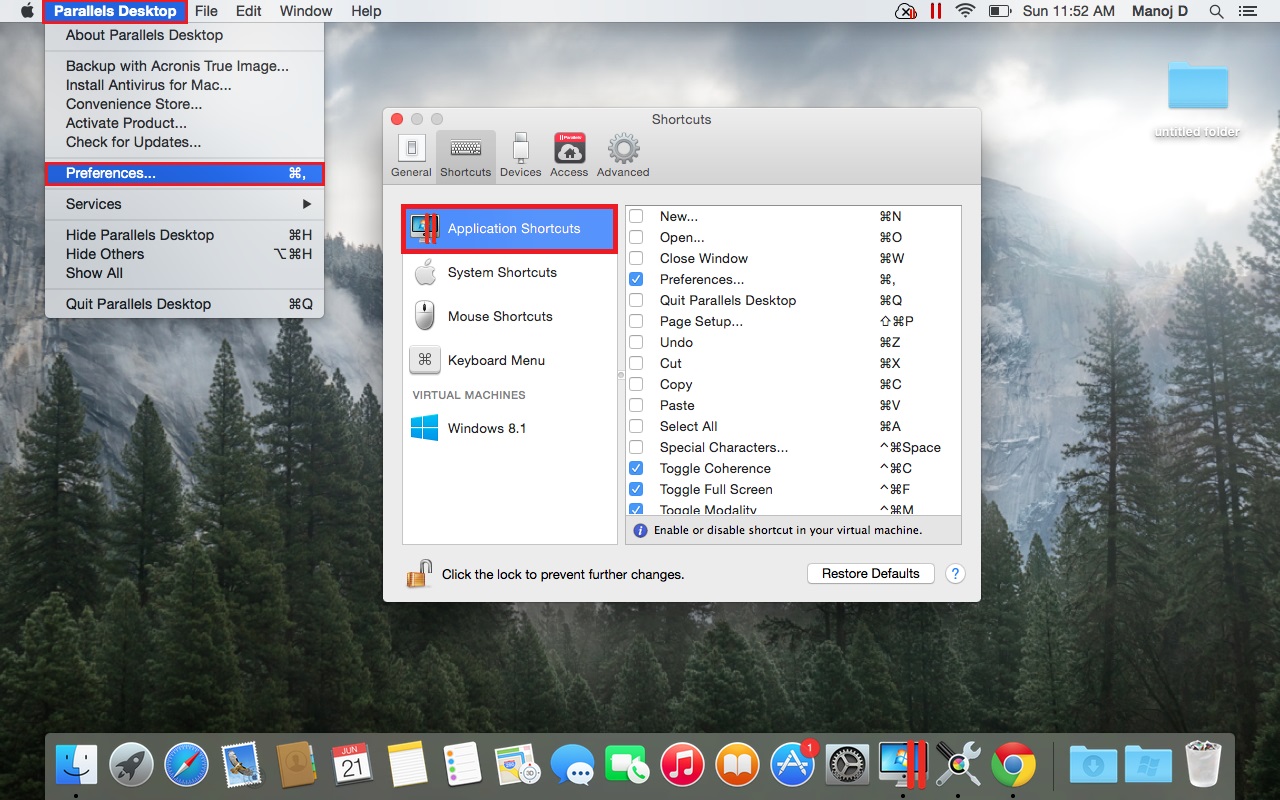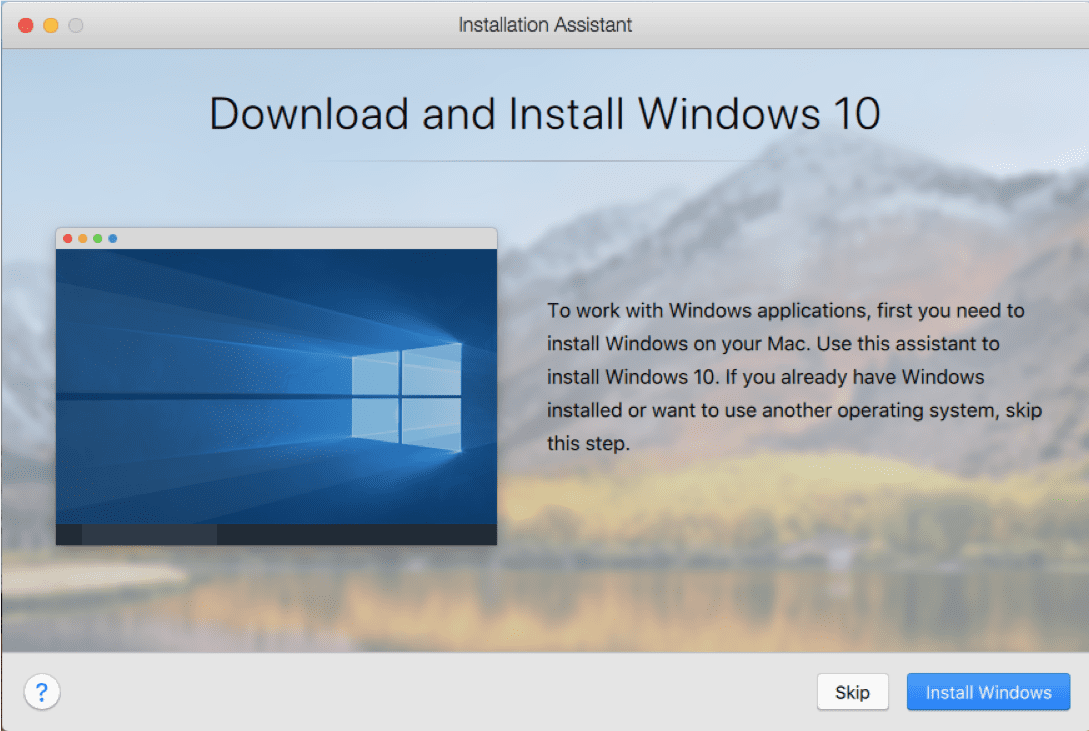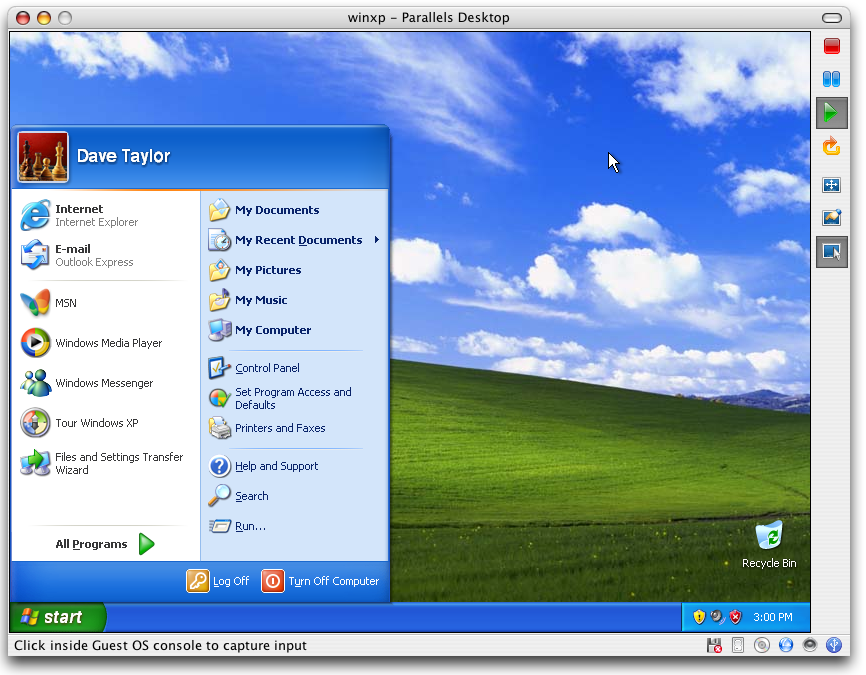- . — Parallels Tools are not available for this operating system. Note: Parallels Desktop for Mac emulates PC hardware, so operating systems that are not present in this list can work as well. They are not on the list because we didn't test them in our lab yet or we found some critical issues.
- Double-click on the ParallelsDesktop.dmg file to open it (it might be in Finder or on your desktop.
- Is a developer of desktop and server virtualization software. Released on June 15, 2006, it was the first software product to bring mainstream virtualization to Macintosh computers utilizing the Apple–Intel architecture (earlier software products ran PC software in an emulated environment). Its name initially was 'Parallels Workstation for Mac OS X', which.
- In Windows on your Mac, click in the right side of the taskbar, click the Boot Camp icon, then choose Boot Camp Control Panel. If a User Account Control dialog appears, click Yes. Select the startup disk that has the default operating system you want to use. If you want to start up using the default operating system now, click Restart.
Parallels 3.0 for Mac - Run Windows on your Mac OS X 10.4.6 or Later Sealed NEW $25.98 Parallels Desktop 7 4 Mac 10.5 Leopard 10.6 Leopard 10.7 Lion Run Windows Apple.
Processors
Intel® architectures based on 32-bit systems are supported as target platforms. Components no longer support installation on IA-32 architecture hosts.
Systems based on Intel® 64 architectures are supported as host and target platforms:
- Intel® Core™ processor family
- Intel® Xeon® processor family
- Intel Xeon Scalable processors
Note We assume that these processors are configured into homogeneous clusters.

Operating Systems

All components in Intel® Parallel Studio XE support these operating systems on Intel® 64 architectures. Individual component tools may also support additional operating systems and architecture configurations. For full details, see the release notes.
- Red Hat Enterprise Linux* 7, 8 (the equivalent CentOS* versions are supported, but not separately tested)
- Ubuntu* 16.04 LTS, 18.04 LTS, 19.04
- Fedora* 29, 30
- Debian* 9, 10
- SUSE Linux Enterprise Server* 12, 15
- Amazon* Linux* 2
- Clear Linux
- Windows® 10
- Microsoft Windows Server* 2019, 2016
- macOS* 10.15, 10.14

Note Intel MPI Library and Intel Trace Analyzer and Collector are supported on Intel® Cluster Ready systems and high-performance computing (HPC) versions of the listed versions of Windows Server. These components are not supported on Ubuntu non-long-term support (LTS) systems.
Additional Software
For macOS, the Intel C++ Compiler and Intel Fortran Compiler require an installation of Xcode* 10 or 11.
Disk Space
For a standard installation, you need a minimum of 12 GB of disk space. Cluster installations require an additional 4 GB of disk space.

Note The installer may need up to 12 GB of additional temporary disk storage to manage intermediate installation files.
Memory
2 GB RAM (minimum)

Boot Camp Control Panel User Guide
You can set the default operating system to either macOS or Windows. The default operating system is the one you want to use when you turn on or restart your Mac.
Set the default operating system
In Windows on your Mac, click in the right side of the taskbar, click the Boot Camp icon , then choose Boot Camp Control Panel.
If a User Account Control dialog appears, click Yes.
Select the startup disk that has the default operating system you want to use.
If you want to start up using the default operating system now, click Restart. Otherwise, click OK.
You can’t change your startup volume to an external FireWire or USB drive while you’re using Windows.
To learn how to change the default operating system using macOS, see Get started with Boot Camp.
Restart in macOS
In Windows on your Mac, do one of the following:
Using Parallels On Mac
Restart using Startup Manager: Restart your Mac, then immediately press and hold the Option key. When the Startup Manager window appears, release the Option key, select your macOS startup disk, then press Return.
If you’re using a portable Mac with an external keyboard, make sure you press and hold the Option key on the built-in keyboard.
Restart using Boot Camp Control Panel: Click in the right side of the taskbar, click the Boot Camp icon , then choose Restart in macOS.
This also sets the default operating system to macOS.
Parallel Software For Mac Reviews
For more information about restarting in macOS, see the Apple Support article Switch between Windows and macOS.